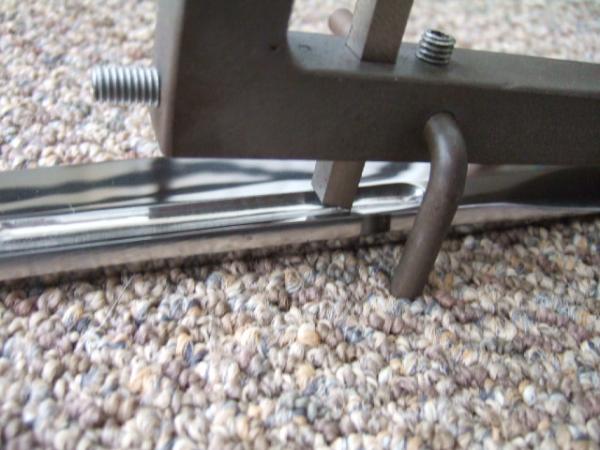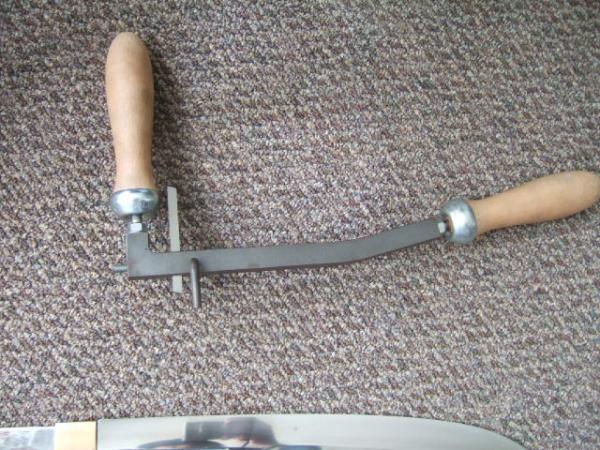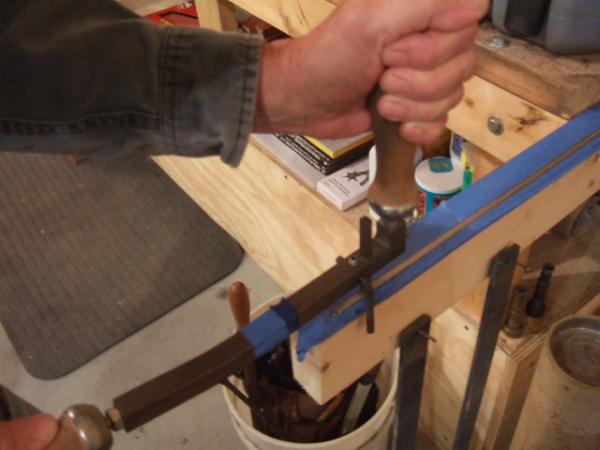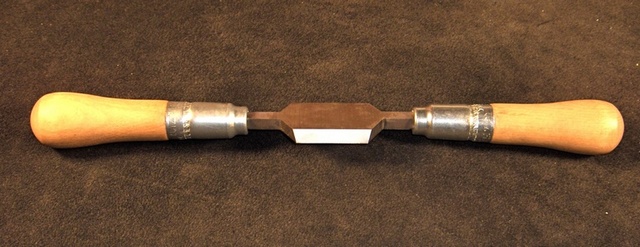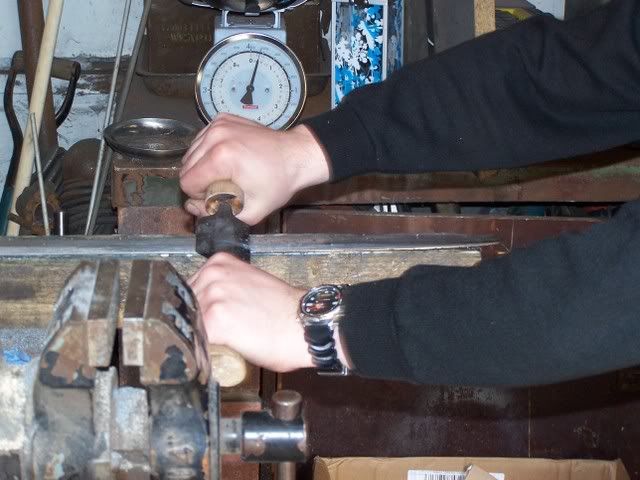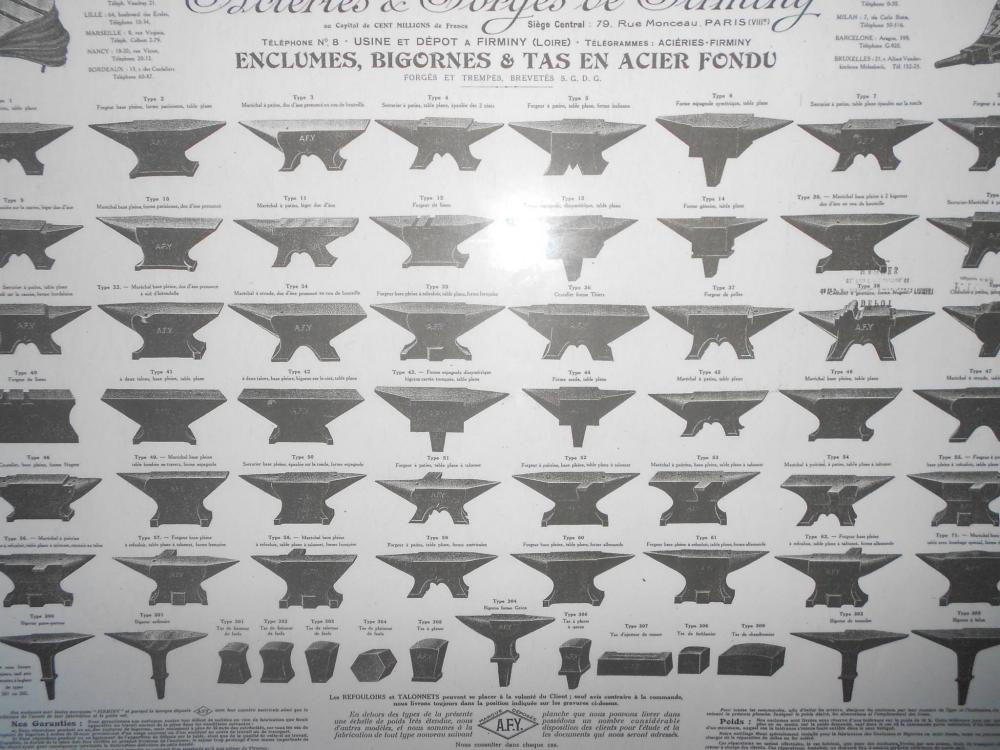-
Posts
2,335 -
Joined
-
Last visited
Content Type
Profiles
Forums
Articles
Gallery
Downloads
Events
Everything posted by John McPherson
-
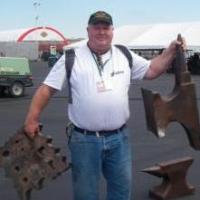
anvil collection
John McPherson replied to Blacksmithworld's topic in Anvils, Swage Blocks, and Mandrels
Offer to make a concrete replica of the K6 Hispano Suiza and see how that goes over..... -
Western NC does have a lot of artist smith types, along with plenty of retirees. Low cost of living, close to Penland and John C. Campbell Folk schools, reasonable amount of smithing tools available, and lots of active chapters for meetings. And a plethora of opportunities and shows within a day's drive, like Quad States, SERB, FABA, AACB, Blade Show, Tannehill, Great Smoky Mountains Hammer-in, Fire on the Mountain. Oh, and this summer's ABANA Conference in Richmond, VA. At one time, a famous anvil collector lived quite close to JCC Folk School in Murphy, NC, and invited Instructors and their students to tour his horde amassed store of vintage anvils. Alas, he is deceased and his collection was sold at auction and dispersed. There are still quite a few artist types up in them hollows.
-

Help ID this anvil
John McPherson replied to Christian Nada's topic in Anvils, Swage Blocks, and Mandrels
I see no evidence of a hardened face plate, which should be visible in a different texture on the face, and a demarcation line inside the hardy hole or at the heel. That is not a weld line, it is a casting seam, and a poor one at that. You sir, have a classic ASO. Not a real anvil. -
-

Small anvil unknown
John McPherson replied to Otis1288's topic in Anvils, Swage Blocks, and Mandrels
Horn is way too long and "perky" to be a Vulcan: plus, I have never seen one without the raised logo unless it has been ground off. Does not jibe with any other anvil maker that I have in my photo collection. Time to call an expert. -
Ausfire, any waiter in the US can answer that. "What is the difference between an Australian and a canoe? Sometimes a canoe will tip."
-
From my readings on the subject, rust and freezing temps are the bane of the "bosh" tank, letting the water level get too low can burn up the nozzle, or cause steam explosions spraying the smith with scalding water.
-
Tanks for high pressure welding gases, even BBQ propane tanks, are HSLA steels. High Strength, Low Alloy, very high purity batches of steel made just for the purpose. Think Kobe beef as a price point. They have to last a long time under less than ideal conditions, and I still regularly see tanks with swastikas, or Property of War Dept. markings. (WD in a shield) Very different to weld on than A36 structural steel, which is the Spam equivalent. Or 3rd world rebar, which is Alpo.
-
Fore and aft hardie holes were a standard item: you will note that almost half of the production patterns had them. And of course, customs orders were always possible.
-
Foot square piece of hard fiberboard or plywood + spray can of adhesive + sandpaper = flat surface for truing up surfaces. Heat will usually soften the adhesive enough to easily change the paper.
-
NOT a welding line, a join between two wooden preforms in making the mold, that they did not even bother to blend in. To me, it screams cheap knock-off, after-hours work at a foundry with whatever was left in the ladle. And every town big enough to have a stop light used to have a foundry. No name = no liability. But what do I know, I'm just some guy on the internet, telling you something that you really don't want to hear.
-
Judging from the shape of the horn and heel, the thickness of the feet, and the pattern of the chipping along the edges and around the hardy hole: 99.99% certain that it is a cast iron boat anchor. Even if you got it for free, four hours in a car and a tank of gas later it would be a loss. Get a lump of steel from a scrap yard and don't look back.
-

Type of anvil
John McPherson replied to Nathan Stanford's topic in Anvils, Swage Blocks, and Mandrels
"The Mousehole Forge" , (2003) by Richard Postman, also the author of "Anvils in America". -
OK, I'll bite. What makes you think any part of your vise is special? What are you seeing that we are not? Looks pretty generic from what I can see. Detailed pictures and explanation would be helpful.
-
Very good info, David. The screw box alone was half the price of a new small vise. What year is that catalog page from?
-
Heck, I can freeze up a bottle in August in the south! With no shade! You just need a plastic or metal tub a few inches wider than the tank. Propane tank does not need to float, in fact it should not. Filling it with a couple of gallons of cold tap water will work, does not need to be heated. Anything above 32F is fine. Just dump the tub when you are done for the day. (Skeeters in the summer, ice splitting the tub in the winter.)
-
My inference from the website is that it is a salt bath surface nitriding and heat treatment, about like the coating on drill bits. Once your wear thru the coating, performance is no better than the base metal heat treatment provides.
-

Show me your Bottle Openers!
John McPherson replied to Arbalist's topic in Blacksmithing, General Discussion
I became a shape-shifter when I got Furniture Disease. My chest fell into my drawers. -

1936 fisher 250 lbs anvil
John McPherson replied to Josh Corkron Sr.'s topic in Anvils, Swage Blocks, and Mandrels
Frosty, it looks to me like a poor casting run as far as surface finish goes on all of the body, especially the markings. It was the Depression, and there was no fettling done on that anvil past the striking surfaces. I speculate that the numbers were so illegible that they had to grind just that area, then stamp the date in for the warranty to be in effect. If you look at vises and other tools from the companies that managed to stay in business until WWII, there was a noticeable degradation in aesthetics, fit and finish on most utilitarian items. The heyday of ornate metalwork and metal tools was probably around 1890, and there was a downslope than turned into a sheer cliff in 1929. My $0.02. Which, like all opinions is worth what you paid for it. Maybe less. -
Half a dozen threads on here: go to google, and search for "rivet headers + IFI"
-
Cratex is one major band of rubber based polishing points, 3M and many others make them as well.
-
Nope, just a little soot. If it was blistered and bubbly, that would be a problem. Next time stick it in a short chunk of pipe (called a muffle) and it will cool more evenly without coming into direct contact with exhaust gases. Also a good way to evenly heat small items like nails so that you don't burn off the ends, or lose them in the coals.
-
Are you crazy? Well, you are here, so welcome to the metal madness. If you were building a new personal forging/hot work shop, using wooden blocks on end, or a packed dirt/sand/crushed limestone/fine gravel floor for the anvil area would be preferable. But you said garage, so I will assume a residential area where you don't want to destroy the resale value. I suppose that you could bolt down a wooden frame and fill one area with a few inches of fill. Laying down thin plywood over a foam base would protect your floor and your feet at the same time. Horse stall mat will hold up longer than the normal interlocking work mats. Lots of folks have a 'dirty' area and a 'clean' area in their shops. Welding curtains or commercial strip curtains will work for barriers. They can both be hung from the rafters, or put on a portable frame. Or if you are really cheap like me frugal and inventive, recycling old pallets and chipboard into several small panels might be an option.

